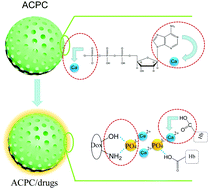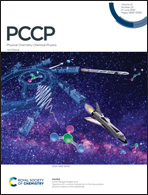Tracking the interaction of drug molecules with individual mesoporous amorphous calcium phosphate/ATP nanocomposites – an X-ray spectromicroscopy study†
Abstract
Adenosine triphosphate (ATP) biomolecules play critial roles in the biomineralization process during the formation of amorphous calcium phosphate composites (ACPC), and ACPC is an important drug carrier due to its significant advantages of biocompatibility and biodegradability. Hence, studying the behavior of ACPC nanodrug carriers is crucial to investigate the structural regulation of biomimetic minerals and calcium phosphate (CaP)-based drug delivery systems. However, it is difficult to probe these interactions using traditional characterization methods. In this paper, XANES analysis together with STXM successfully provided a method to reveal the interaction of ATP and drug molecules with individual mesoporous ACPC. We found that the adenosine and phosphate groups of ATP biomolecules coordinated with Ca2+ and played critical roles in the formation of ACPC; drug molecules with the –COOH groups were linked to Ca2+via carboxylic acid groups primarily by electrostatic interactions, and the N-containing ring structures within the drug molecules also coordinated with Ca2+.



 Please wait while we load your content...
Please wait while we load your content...